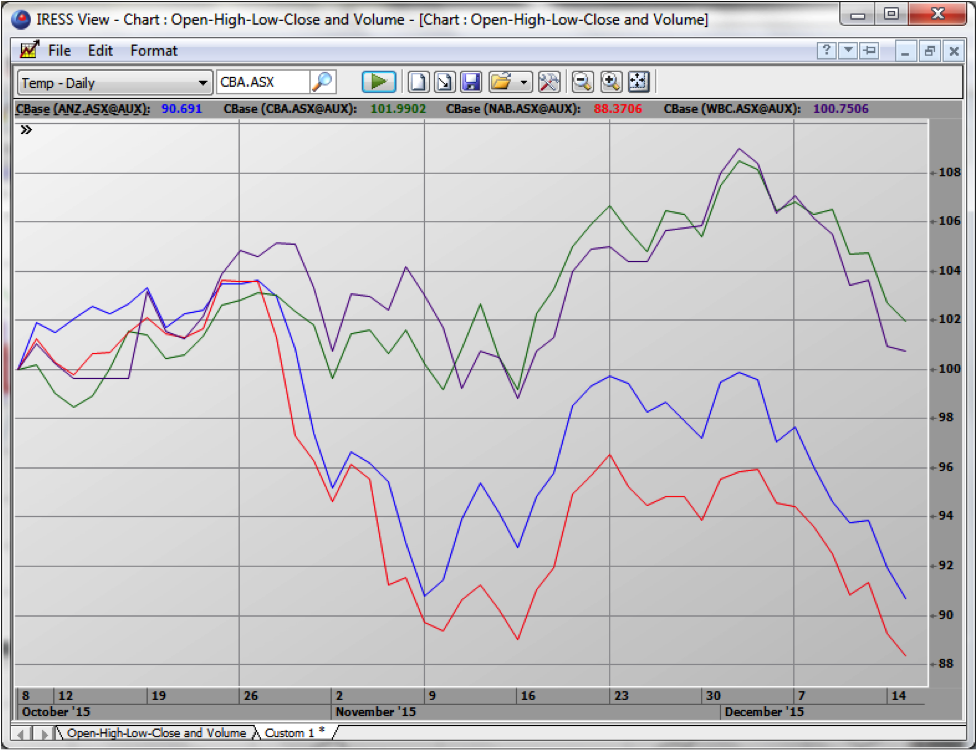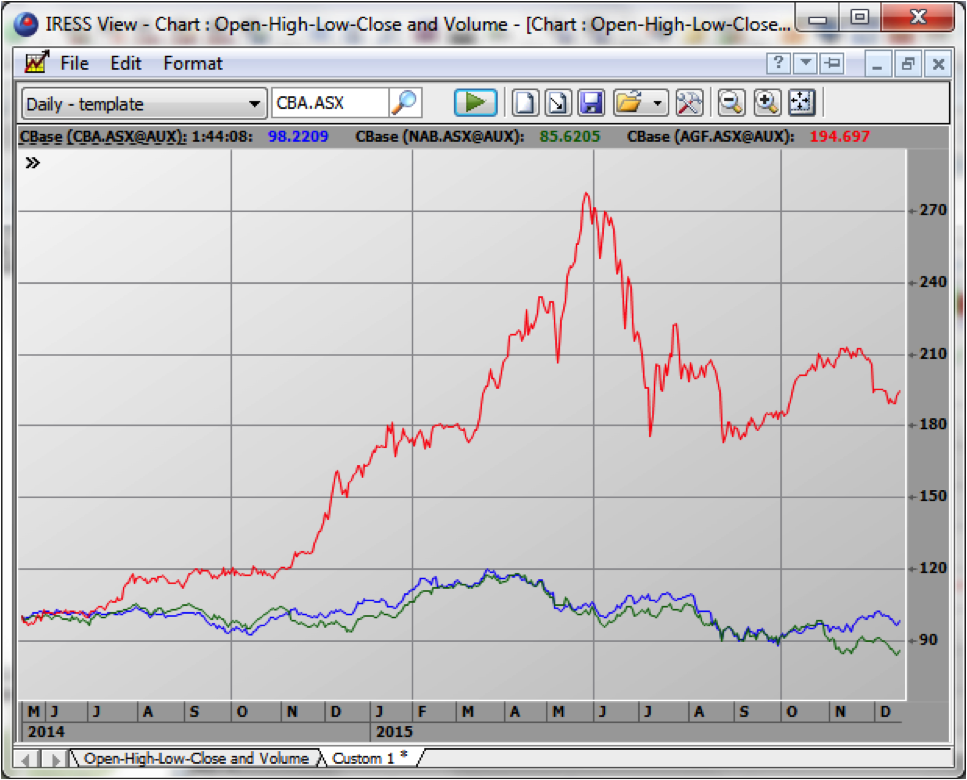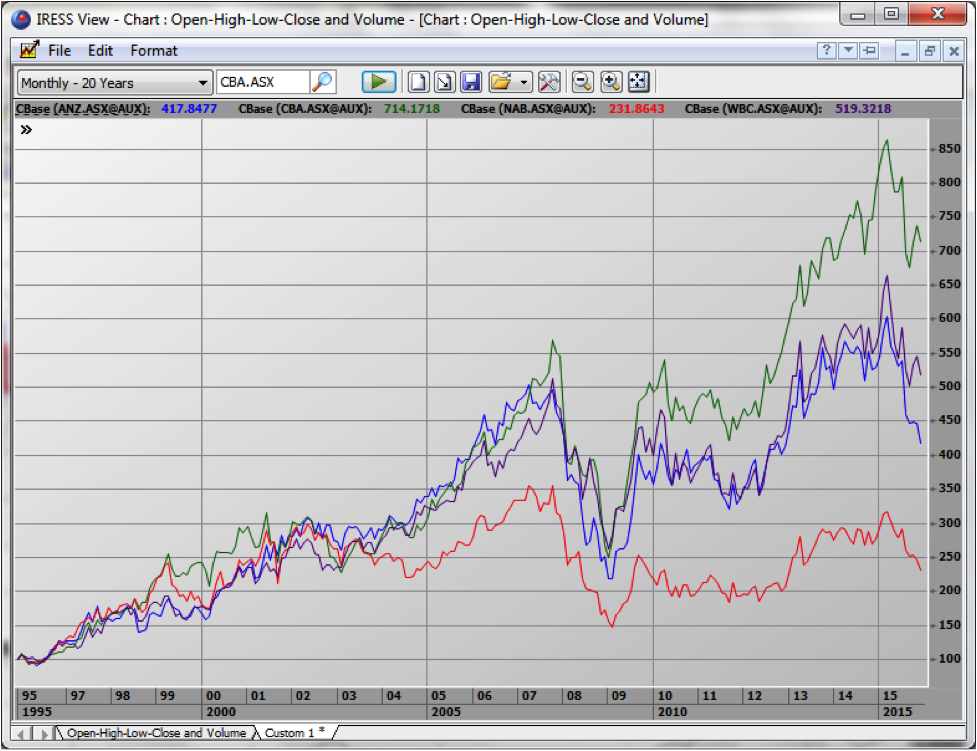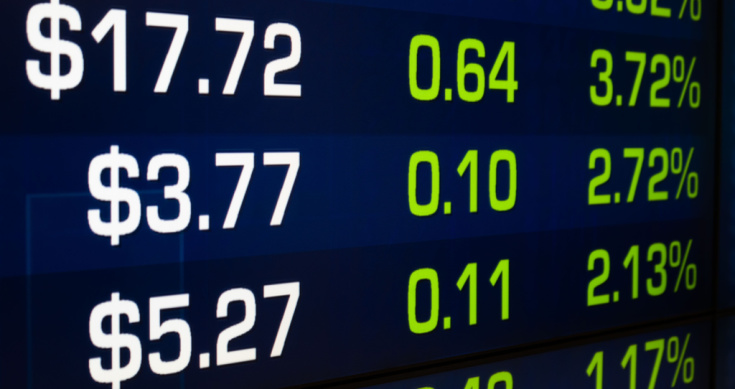Since mid-2012 the “Yield Trade” has carried the ASX higher culminating in early 2015 with a “Yield Compression” that saw the Big 4 Banks, Telstra (TLS), BHP, RIO, Woolies (WOW), Wesfarmers (WES) and Woodside (WPL) all paying similar dividends to the REITs.
The 2015 Yield Compression was a rare market-occurrence that culminated with the recent market high (13 April 2015 at 5996 points) and the demise of the Big 4 Banks as the XJO’s driving force. Within the Big 4 Banks there has been further decoupling since September and that’s inclusive of the November dividends for ANZ, NAB and WBC.
Almost every analyst in the country will detail the same concerns for all banks:
– Unsustainable dividend payout ratios;
– Share-price ‘glass-ceilings’ from the recent corporate actions/capital raising;
– Mortgage-book exposure to the investor segment receiving unwanted regulatory involvement
– Questionable earnings growth, placing dividend sustainability in doubt
The chart below shows CBA and WBC are the clear leaders in this de-coupling (add ~2.5% to ANZ, NAB and WBC if you want to include the dividends – although the outcome is still the same). So what’s wrong with ANZ and NAB?

ANZ
Over the last five years the market has both praised and penalised ANZ’s share price for its exposure to Asian growth – Although to what extent? If ANZ is really ‘priced for Asian growth’, then wouldn’t we expect ANZ to have ridden the 2014-2015 rise in Chinese markets, much like AMP China Growth Fund (AGF)? The chart below suggests that ANZ did not rise with AGF and equally is not the reason for ANZ lagging CBA and WBC in December 2015.

Could the answer be within the management of ANZ? What better place to look for markets pricing ‘bad management’ other than NAB over the last 15 years.
NAB
NAB has made some less-than-sensational investment/acquisition decisions over the years. Currently NAB is spinning off Clydesdale which is a prime example of NAB being seen a little like RIO with Alcan acquisition in 2007. NAB is the clear laggard and the below chart shows (before dividends) just how much of a laggard NAB has been – ouch for the NAB buy-and-hold investor for not re-weighting their portfolio on occasion.

Who is the Big 4 Banks’ “Dog” for 2016?
The last 20 years show that the Big 4 Banks have performed well. Arguably the Big 4 Banks in Australia had similar trading conditions and opportunities over this period, however NAB failed to capitalise – and the muted share-price growth shows.
The decoupling we’re seeing with ANZ and NAB in December 2015 could indicate ANZ is falling behind to a comfortable third place, slightly above NAB in their very-comfortable fourth place in the Big 4 Banks of Australia.









